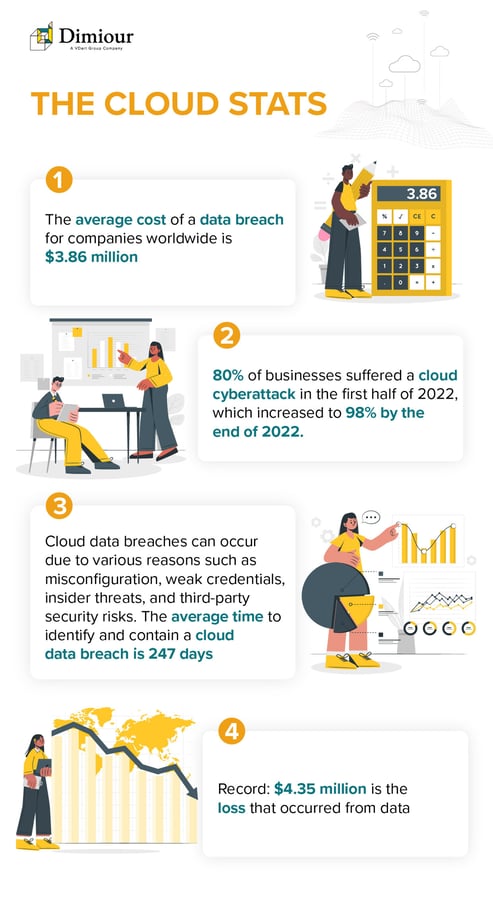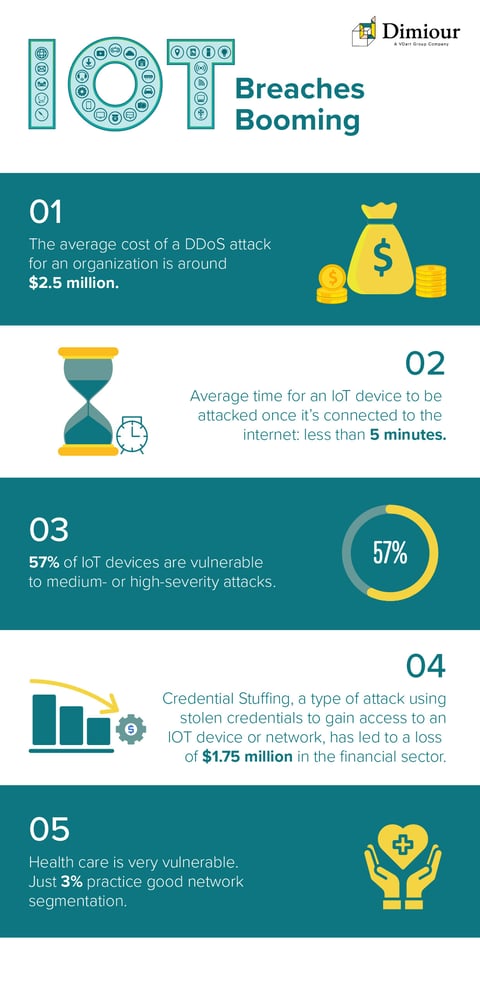As a natural outcome, cybersecurity has grown into a primary concern to safeguard data from various cyber hazards, illegal access, and even worse, a complete breach!
The overwhelming magnitude of phishing exploits, hacks, security breaches, and cryptocurrency heists in 2022 has created some unwanted records ( $6 trillion was the estimated total loss that cybercrime caused in 2022), and an estimated yet astounding 53.35 million US residents were the victims of cybercrime during the first six months of 2022 alone.
Cybersecurity is not a sector or industry alone; it has become a norm for the modern world that is highly dependent on digital technologies that are embedded with data. The magnanimous records mentioned above outline the utmost importance of cyber security.
Here is a compilation of some cybersecurity trends from Dimiour’s cybersecurity professionals, that might rule the roost in 2023.
1. Cloud-Based Services: The Chief Target:
During the past several years, there has been a dramatic migration of business functions, data, and systems to the cloud. The cloud is the driving force behind increased performance, reduced operational costs, quicker speed to market, and more versatility and agility. As cloud technologies come with all these benefits in their belt, it’s most likely to be the coveted target in 2023.
According to a Check Point survey on cloud security, it is stated that 27% of firms experienced breaches in the previous 12 months. These sorts of untoward incidents will only increase as cloud devices are more employed because of a change in the workplace environment (the current hybrid work model)
According to reports, at least 80% of businesses have suffered a cloud cyber attack in 2022, and the graph skyrocketed to 98% by the end of 2022.
Even while these figures are rather high, what's even more startling is that 43% of businesses revealed 10 or more attacks within the same period (latter half of 2022), while 83% of the enterprises experienced multiple breaches.
According to an IBM study, the median cost ( $3.86 million, 2020) associated with data breaches went up to $4.35 million in 2022, which is a 12.7% rise, just in a span of two years. This is a record-breaking high—certainly not the type of world record you would like to break.

2. IoT (Internet of Things): Impending Attack Looms:
One of the main causes of the surge in cyberattacks during the past decade is the rapid development of new technology and devices.
The Internet of Things shortly termed (IoT) is the term used to describe the billions of digital devices or physical objects employed around the world that collect and transmit data online.
It is projected by 2025, that there will be more than 41 billion linked IoT devices. Currently there are a great number of IOT gadgets like Google Home Voice Controller, Amazon Echo Plus, Nest Smoke Alarm, home security systems like Surveillance cameras, refrigerators, connected cars and so on being used regularly.
These huge numbers of gadgets give way to potential for cyberattacks like Botnet attack, DDOS (distributed denial-of-service ), Brute force attacks are growing at a rapid rate that security measures are very challenging to employ, implement and keep up pace.
The market for IoT security is anticipated to increase from 34.2 billion in 2022 to 38.7 billion in 2023. Everything is related to the fact that there are more interconnected devices that require serious cybersecurity.
These IoT device security numbers are not unexpected because security firmware will become much more crucial over the next ten years.

3. The Rise of Ransomware:
Ransomware, commonly referred to as targeted ransomware, is a type of malware that hacks into a person’s vital data and holds their information hostage, to extort money. The most common victims of ransomware attacks are cryptocurrency users.
The strategies entail blocking users and system admins from accessing any specific files that contain important data or in some cases even whole digital networks, preceding with a “Note of Ransom” demanding money to recover access.
A US Federal government report states that in a day, more than 4000 ransomware attacks are occurring. And that’s a sign of worry!
The first six months of 2022 have witnessed a mind-boggling 236.1 million ransomware assaults worldwide. Whereas 623.3 million full-fledged malware assaults have been recorded worldwide in 2021. This does not imply that every assault was successfully launched and accomplished, but it does demonstrate the pervasiveness of this cyber menace.
In 2022, ransomware attacks were said to have hit 71% of organizations globally.
While ransomware is not a new cybersecurity concern, it has gained considerable attention at the highest levels of the government. Ransomware has hampered people's ability to obtain quality healthcare, fill up gas for their vehicles, and buy essentials like groceries.
Conclusion
As we conclude this analysis of the top cybersecurity trends for 2023, the landscape of cyber threats is becoming more complex and challenging for businesses. In particular, the three trends that are set to dominate in the coming year - cloud, ransomware, and IoT - will require organizations to remain vigilant and proactive in their approach to cybersecurity.

